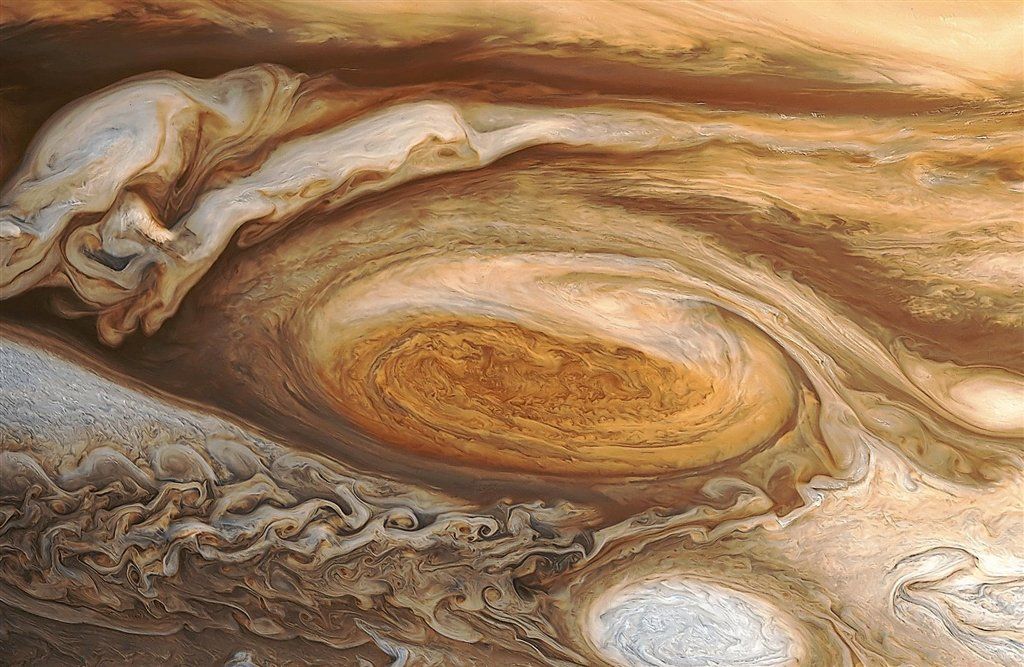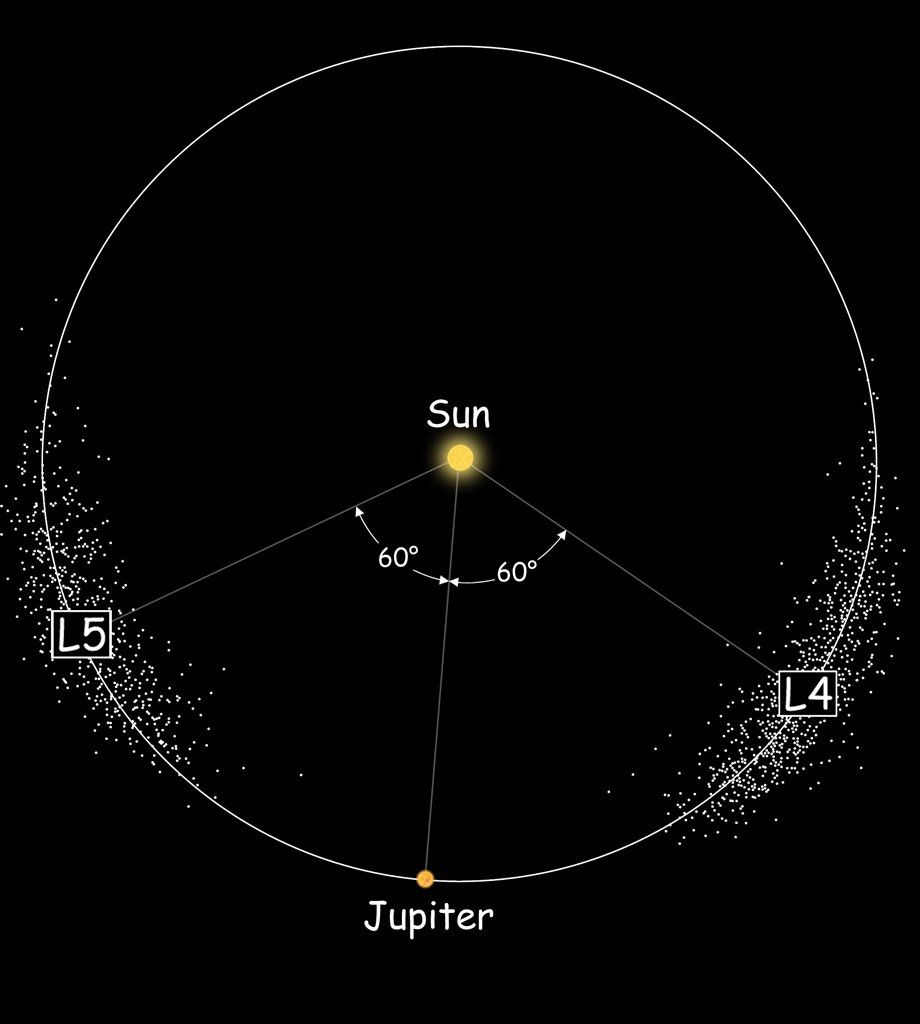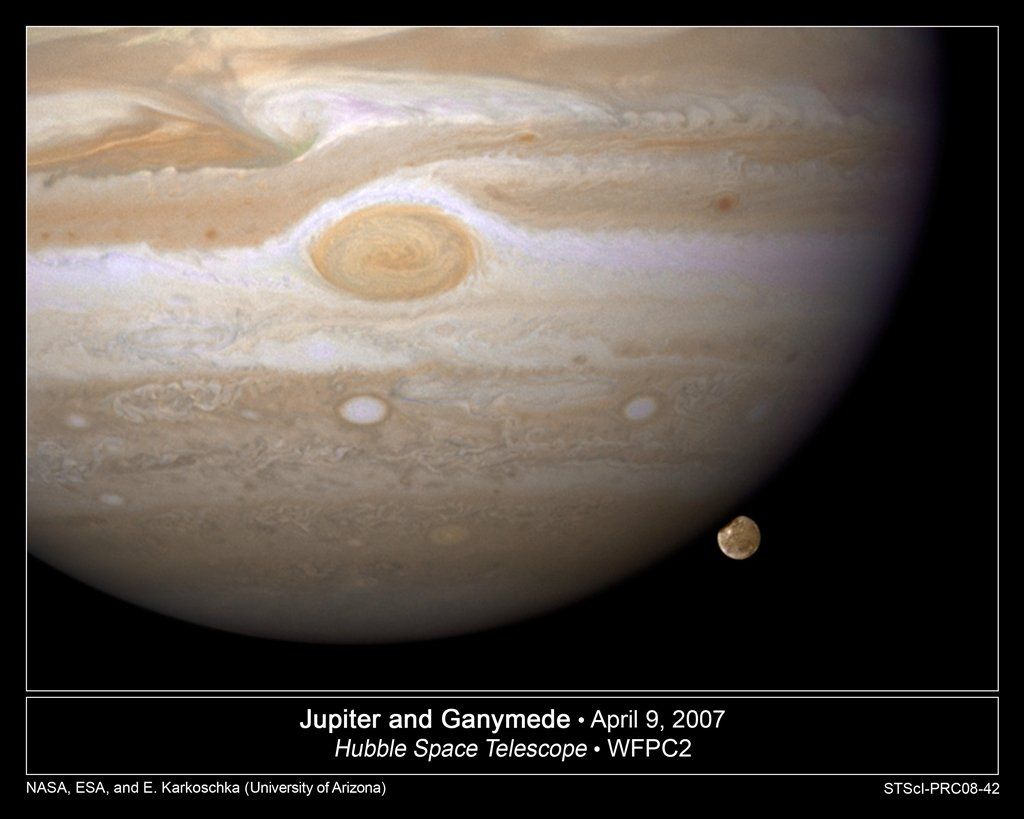This web page is created within BALTICS project funded from the European Union’s Horizon2020 Research and Innovation Programme under grant agreement No.692257.
Jupiter
Jupiter is the largest planet in the Solar System and the fourth brightest natural celestial object in the Earth’s sky. Jupiter is only surpassed in brightness by Venus, the Moon and the Sun.
Jupiter’s orbit is about 778 million km, or 5.2 astronomical units, from the Sun. Accordingly, one year on this planet lasts 11.86 Earth years.
However, Jupiter has not always been where it is now. It is assumed that Jupiter has formed in the remote region of a nascent Solar System. The clouds of gas flowing towards the Sun pulled the new Jupiter to the current location of Mars. Once Saturn had formed, both planets began to move away from the Sun until they reached their present-day positions. The great movement lasted hundreds of thousands or even millions of years and had a profound effect on the inner regions of the Solar System. It is assumed that Jupiter’s gravity prevented the material found in the asteroid belt from coalescing into other planets and also, for a while staying close to the orbit of Mars, have reduced the amount of raw material, therefore preventing Mars from becoming a larger planet.
Jupiter is a gas giant composed mainly of hydrogen and helium. Water, methane, ammonia and other compounds are also present in small amounts in Jupiter’s atmosphere. In the upper atmosphere, clouds of different colours form bands that can be seen with a telescope.
Jupiter does not have a solid surface. To determine the length of a day on the giant planet, scientists originally used a permanent atmospheric feature – an enormous storm known as the Great Red Spot. Nowadays, by analysing radio waves produced by Jupiter’s magnetic field, scientists have managed to calculate that one day on Jupiter lasts 9 hours and 55 minutes.
The Great Red Spot is an anticyclonic storm that was probably first observed in the 17th century. Detailed observations of the storm have been available since the 19th century. This means that this atmospheric formation has existed for several hundred years. Two Earths could fit inside this “spot”. Accurate measurements taken only a little over 100 years show that the enormous storm is shrinking.
Because Jupiter rotates very fast on its axis, it is flattened at the equator. The diameter at the equator is about 143,000 km. This means that 11 Earths could fit across Jupiter’s equator. However, its mass is about 2.5 times greater than that of all the other planets in the Solar System combined, or 318 times that of Earth. If Jupiter was about 70 to 80 times more massive, it would have become a full-fledged star.
The temperature in the upper atmosphere of Jupiter is about -145 degrees Celsius, but in the deeper layers the pressure and temperature rise. In the core region, temperature could reach as high as 40,000 degrees Celsius. Because the pressure increases towards the core, it is assumed that hydrogen under these conditions exists as so-called metallic hydrogen, which resembles mercury. Jupiter’s core is probably a sphere of solid rock 10 to 15 times larger than the Earth.
It is a layer of metallic hydrogen that creates Jupiter’s strong magnetic field, which extends only a few million km towards the Sun, but in the opposite direction forms a “tail” of more than 650 million km that crosses Saturn’s orbit. Jupiter’s moons orbit in this magnetic field. Charged particles trapped in Jupiter’s magnetic field follow magnetic field lines into the atmosphere around the magnetic poles, causing some of the strongest aurorae in the Solar System. Unlike aurorae on Earth, which depend on solar activity, the charged particles in Jupiter’s magnetic field are also ejected by Io, the planet’s volcanic companion. So, the giant planet is constantly in a state of aurorae.
Jupiter currently has 67 known moons, of which only 16 are larger than 10 km in diameter. The four largest moons discovered by Galileo Galilei through a telescope are called the Galilean moons. These are Io, Europa, Ganymede and Callisto.
Several thousand asteroids that are closely linked to the giant planet can be called Jupiter’s conditioned moons. These are the Greeks and Trojans, which share Jupiter’s orbit and orbit the Sun at gravitational equilibrium points or Lagrange points. The leading group, or Trojans, orbit Jupiter at about 60 degrees ahead of the giant planet. The other group, the Greeks, follow Jupiter’s orbit, about 60 degrees behind it.
As the Voyager 1 probe flew past Jupiter, the rings were spotted in its images. Unlike Saturn’s huge ring system, which is composed of larger and smaller chunks of ice, Jupiter’s three faint rings are composed mainly of dust particles.
Although the giant planet has no solid surface, it occasionally collides with asteroids or comets. One of the most widely observed events was the collision with comet Shoemaker-Levy 9 in 1994, which broke up into several fragments that crashed into Jupiter’s clouds. Dark areas where the comet’s material collided with Jupiter’s atmosphere could be seen in telescopes.























